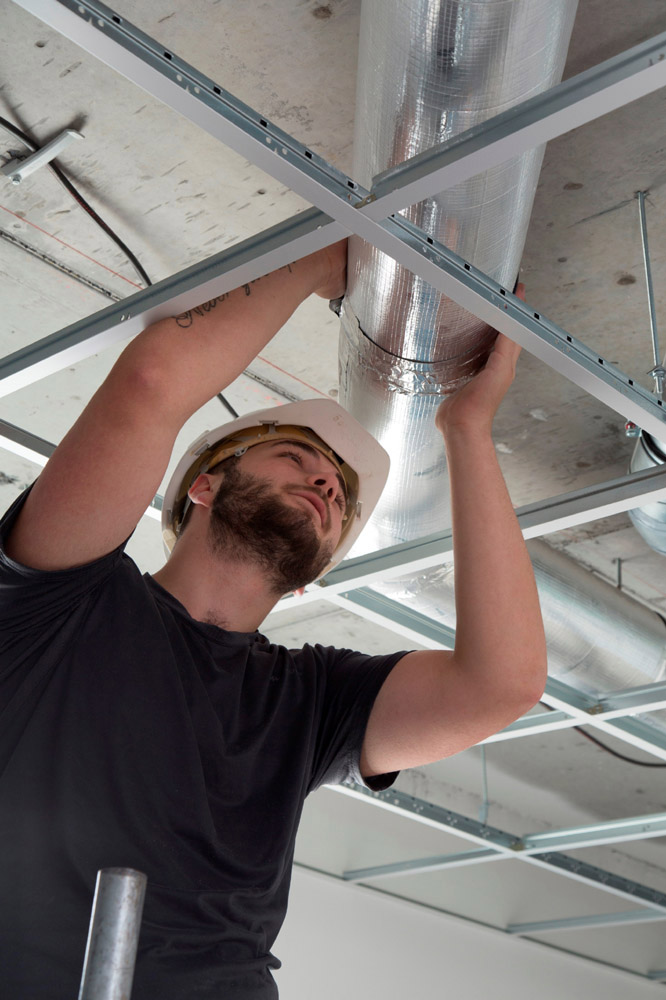Winter is coming – Anthony Barnett, Technical Marketing Manager at Armacell, looks at the top 10 frequently asked questions concerning frozen pipes.
Freezing conditions during winter bring a number of property maintenance issues and one of the most common is the damage that can be caused by cold water pipes freezing. Burst pipes, which only become evident when the ice melts, can be extremely disruptive and expensive for homeowners.
Where are pipes most vulnerable to freezing?
It is the point where mains water risers connect to smaller diameter pipe work outside a building, or in unheated spaces, which is the point most vulnerable to freezing. Exterior walls, lofts, under floorboards and cellars are other areas where un-insulated pipes are vulnerable to freezing because they may not receive the same amount of heat as other parts of the property.
What happens when a pipe freezes?
As pipes freeze, the water, in the form of ice, expands and eventually exerts enough pressure to either burst the pipe along the length or to break pipe connections.
![]()
Will insurance cover the cost of a burst pipe?
This depends on the homeowner’s insurance policy. Not all policies cover damage from frozen pipes, especially some of the basic policies.
When are pipes most likely to freeze?
In the event of sustained cold and subzero ambient temperatures, pipes will quickly freeze if water remains stationary. It is possible for pipes to freeze in a matter of hours, which means that the damage could potentially occur during the night. If a property is left for an extended duration, such as during holidays or over a Christmas shutdown, the dangers are exacerbated. Freezing can occur in plastic, copper and steel pipes.
How do I prevent my customers’ pipes freezing?
When it comes to choosing insulation, there are a number of factors to take into account. Closed-cell elastomeric pipe insulation for commercial applications and polyethylene insulation for indoor domestic applications will delay freezing time considerably by preventing moisture ingress and insulating the pipe to prevent thermal losses.
The water supply regulations (as referenced in section 11 of BS 5422:2009) state that insulation must provide a minimum eight hours protection for small diameter pipes (up to 15mm) or 12 hours for pipes above 15mm diameter.
What if the temperature drops well below zero?
The best way of answering this is to provide an example of a typical domestic application; if a 22mm copper pipe with standing water is situated in an unheated loft space, a minimum AF/Armaflex Class O or Tubolit insulation thickness of 19mm would be required to provide 13 hours protection against freezing. This is based on an initial line temperature of 7°C, an ambient temperature of -6°C and a permitted ice formation of 50 per cent (the point where the risk of bursting increases).
Are plastic pipes better able to withstand freezing?
Although plastic pipes take longer to freeze than copper or steel pipes, insulation is still required. For example, a 20mm outer diameter MDPE pipe (15mm inner diameter) with standing water at an initial temperature of 7°C will freeze in under three hours at an ambient temperature of -6°C.
A range of tables giving the required insulation thickness to provide frost protection for a variety of temperatures and pipe types is available to download from our website.
Why is closed cell insulation so effective at preventing pipes freezing?
Closed cell insulation is made up of millions of self-contained, tightly packed bubbles, which provide a greater level of insulation than other materials such as bead and foam for a given thickness. That makes it a very economical choice. In addition, closed cell insulation does not absorb moisture, which means it can be used on pipework in cavity walls, cellars and under floorboards. It won’t be affected by wind driven rain, flooding and prevents condensation on the pipework itself.
![]()
![]()
Does closed-cell insulation offer other benefits?
Closed cell insulation is flexible, making it very easy to install. It is not fibrous and creates no dust during installation or use. We also offer pre-cut, ready to use Tubolit elbows, which are designed to reduce installation time and costs further – eliminating mitred corners and the need for adhesive.
What advice can I offer my customers?
The three main causes of frozen pipes are quick drops in temperature, poor insulation and thermostats that are set too low. It’s also worth reminding them that, during the last big freeze in 2010, there were 103,000 insurance claims for burst pipes at an average cost of £6,602.
Remember: Leaving heating at a low temperature isn’t fool-proof, either, as it’s not uncommon for a boiler to fail during a prolonged cold spell. However, insulating the pipework with a closed cell material is a permanent solution, which is relatively inexpensive compared to the cost of repairing the damage that can result.




